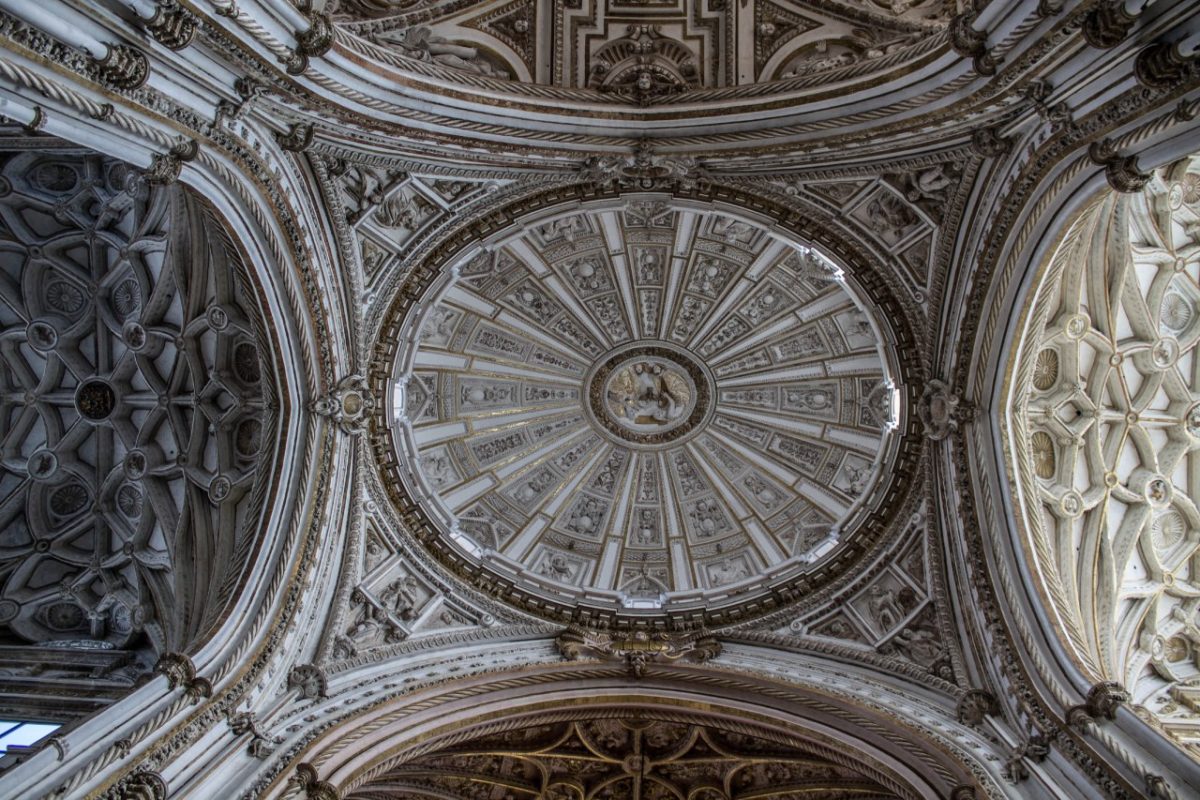When Ferdinand III of Castile conquered Cordoba in 1236, the Mosque was consecrated as a cathedral (remember that the term “cathedral” means a church where the bishop’s seat is located, and that not all cathedrals are huge Gothic churches). In 1266, under the auspices of Alfonso X of Castile and Leon, a Gothic Major Chapel was built occupying part of the expansion of Al-Hakam II and using its skylight, nowadays the Villaviciosa Chapel, as the main altar.
Controversial construction of the cruise ship
In 1523 the ecclesiastical authorities of the cathedral ordered that a new major chapel and cruise be built in the center of the mosque-cathedral, occupying part of the expansion of Abd al-Rahman II. Although this decision was rather moderate in its time, taking as a reference the previous destruction of other ancient mosques altogether for the construction of new cathedrals, the proposed reforms confronted the Cabildo with the canons in a bitter dispute that only was resolved with the intervention of King Carlos I. Although he decided in favor of the Church (and against the protests of his own authorities in the city) when visiting Córdoba did not allow the canons to rejoice in his triumph, and he was annoyed by the reforms once who would have seen the building for the first time.
Dome and roofs of the cruise Dome and roofs of the cruise
Carlos I did not get to see finished the project, which lasted about 84 years and 3 generations of architects. Hernán Ruiz I, el Viejo, made the cross plant with equal arms and with the rectangular major chapel oriented from west to east. Dead in 1547, his son Hernan Ruiz II raised another arm of the cruiser, with a more Renaissance style than the opposite side built by his father, and continued to build the second body of cruise. Hernán II died in 1583. In 1599 Juan de Ochoa was hired to build the base of the dome of the main chapel, completed in 1600. The chapel was finished with its cruise ship in 1607. One hundred and fifty years later, in 1757, the stonework of the Baroque choir, Pedro Duque Cornejo’s masterpiece (who died after delivering the last sketch, at the age of 80) was carved and built, and the last example in Spain of a choir carved in wood.

 Español
Español Français
Français Italiano
Italiano
 WhatsApp
WhatsApp